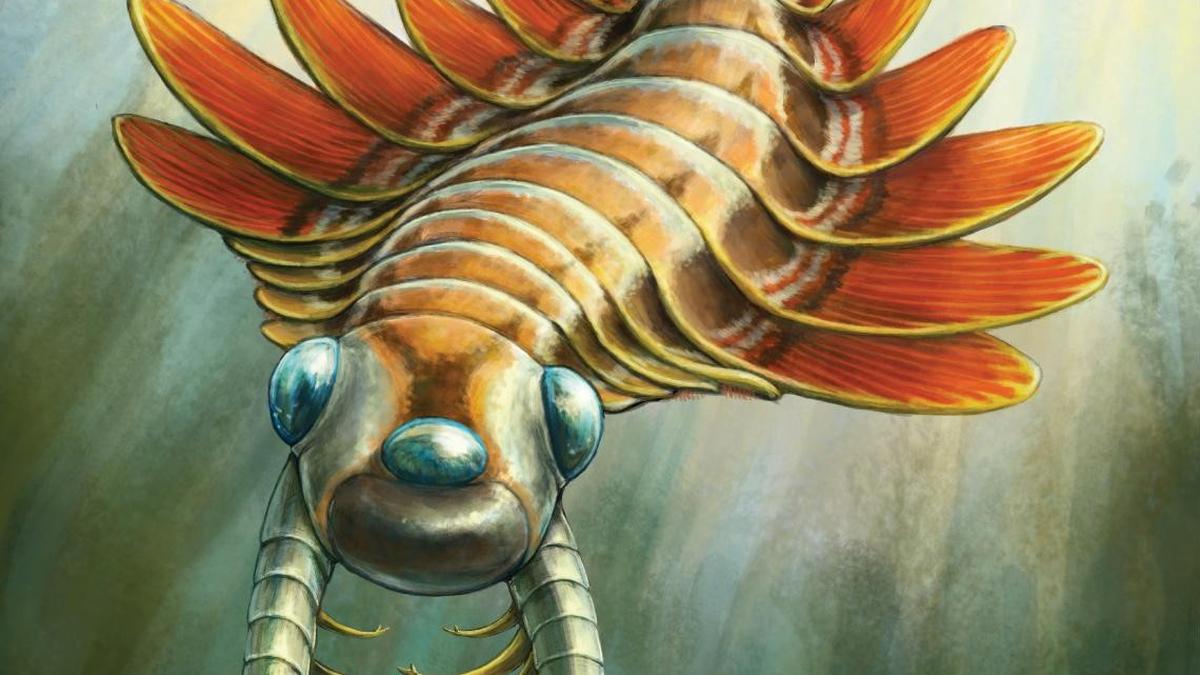Scientists have uncovered a strange new Cambrian sea creature called Mosura fentoni in Canada’s famous Burgess shale. M. fentoni is a radiodont, a distant relative of today’s insects, crabs, and spiders, yet it breaks several rules thought to define that group.
M. fentoni shows that even small Cambrian radiodonts could be highly specialised swimmers with advanced breathing systems, adding a new chapter to the story of how arthropods became so diverse.
M. fentoni’s body is unusually long for its small size (1.5-6 cm). Its body has 26 segments in three zones. A short neck supports the head. A mesotrunk of six paddle-shaped flaps work like propellers for swimming; and a posterotrunk of up to 16 segments is packed with rows of thin gills while its flaps shrink to stubs. Because the gills dominate this rear zone, researchers have said the posterotrunk is a special breathing tagma — a striking parallel to the oxygen-collecting tails of horseshoe crabs.
When the team placed M. fentoni in a family tree, it landed near the base of the hurdiid radiodonts. That position together with its highly divided body suggests early radiodonts were already experimenting with different ways to split and specialise their segments. That is, this ability, which later exploded in crabs, insects and other arthropods, may have been rooted in these ancient predators.
Published – May 25, 2025 03:17 pm IST
























